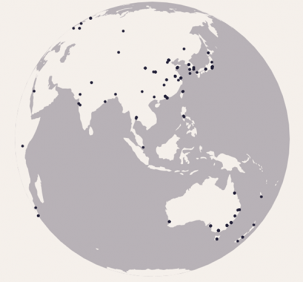climate7
-

Columbia Climate’s Hot 23
The news agency Reuters produced a list of top climate scientists. Columbia researchers comprise a significant number.
-

Sidney Hemming, Paleoclimate Detective, Wins Guggenheim Fellowship
A Q&A with the geochemist, who plans to investigate a key climate interval millions of years ago.
-

Fossil Plants at Bottom of the Greenland Ice Sheet Warn of Future Melting
The discovery of fossil plants below a mile of Greenland ice indicates that the ice sheet completely melted in the past, and suggests it could rapidly do so again.
-

Volcanoes May Have Large, Lasting Impacts on Global Precipitation
A new study employs natural climate archives such as tree rings to better understand volcanoes’ impacts on global rainfall patterns.
-

CO2 Dip May Have Helped Dinosaurs Walk From South America to Greenland
A new study identifies a climate phenomenon that may have helped sauropodomorphs spread northward across the Pangea supercontinent.
-

2020 Tied With 2016 as the Hottest Year on Record
Scientists at the NASA Goddard Institute for Space Studies find that 2020 was statistically equal with 2016, continuing a long-term trend.
-

Far-Drifting Antarctic Icebergs Are Trigger of Ice Ages, Scientists Say
Large numbers of icebergs that drifted unusually far from Antarctica before melting into ocean waters have been key to initiating ice ages of the past, says a new study.
-

How Lessons From Bees, Leaves and Our Own Blood May Help Us Save Civilization
A new book argues that humanity can stave off catastrophe by observing how natural systems have evolved simple strategies to assure their survival.
-

What Will the Climate Be Like When Earth’s Next Supercontinent Forms?
In roughly 200 million years, the continents will once again unite into a supercontinent. A new study explores how the next Pangea could affect the global climate.

AGU25, the premier Earth and space science conference, takes place December 15-19, 2025 in New Orleans, Louisiana. This year’s theme—Where Science Connects Us—puts in focus how science depends on connection, from the lab to the field to the ballot box. Once again, Lamont-Doherty Earth Observatory and Columbia Climate School scientists, experts, students, and educators are playing an active role, sharing our research and helping shape the future of our planet. #AGU25 Learn More
